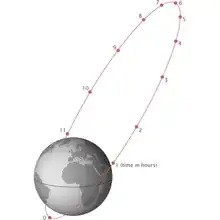At one point in "Marvel's Agents of S.H.I.E.L.D.", some agents are on a planet where the day, defined as the length of time where the sun shines on the planet, occurs only once every 18 years for a couple hours.
Is that a plausible scenario? Can the length of the day and the night be drastically different for a given planet?
Please, do not be afraid to be technical in your answer.
EDIT: (After Rob's answer)
On this hypothetical planet, the "conservation of daylight hours" as he called it seems to be violated. In other words, on earth, when you have long days on a specific location in the northern atmosphere, this is compensated by long nights on a corresponding location in the southern atmosphere. On the planet in question, the long nights/short days seem to be the case for all the planet.
